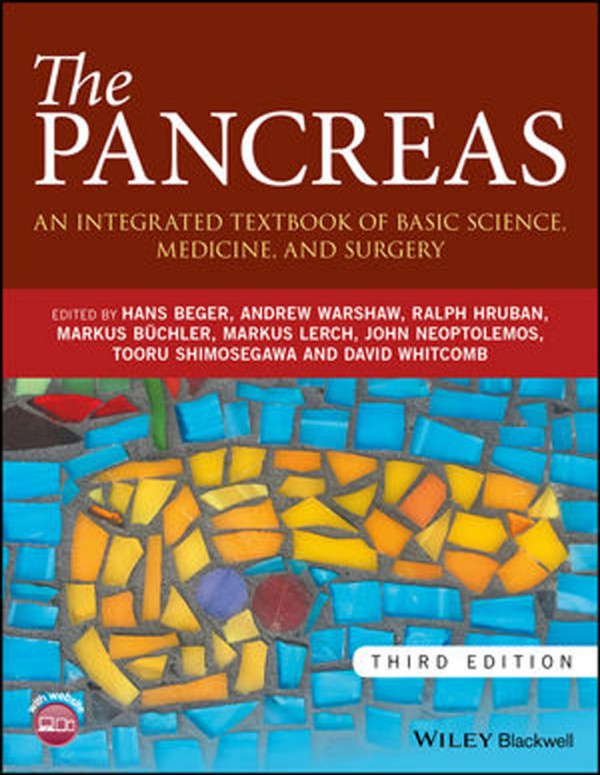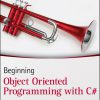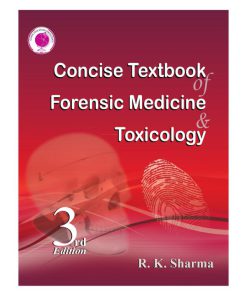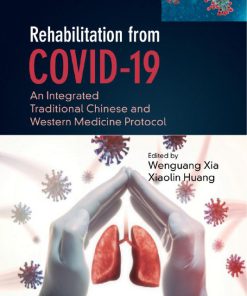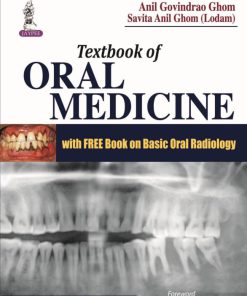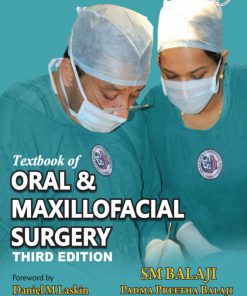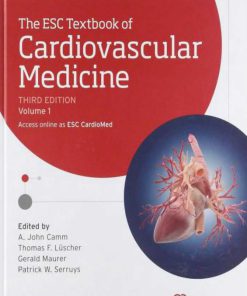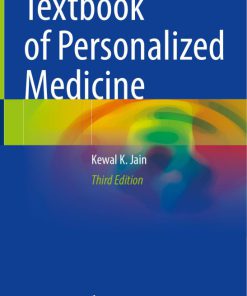The Pancreas An Integrated Textbook of Basic Science Medicine and Surgery 3rd Edition by Markus Lerch,John Neopt,Hans Beger,Andrew Warshaw,Markus Buchler,Ralph Hruban 9781119188414 1119188415
$50.00 Original price was: $50.00.$25.00Current price is: $25.00.
Authors:The pancreas an integrated textbook of basic science, medicine; surgery-Wiley Blackwell (2018) , Author sort:The pancreas an integrated textbook of basic science, medicine & Blackwell, surgery-Wiley , Published:Published:Feb 2018
The Pancreas An Integrated Textbook of Basic Science Medicine and Surgery 3rd Edition by Markus Lerch,John Neopt,Hans Beger,Andrew Warshaw,Markus Buchler,Ralph Hruban – Ebook PDF Instant Download/Delivery.9781119188414,1119188415
Full download The Pancreas An Integrated Textbook of Basic Science Medicine and Surgery 3rd Edition after payment
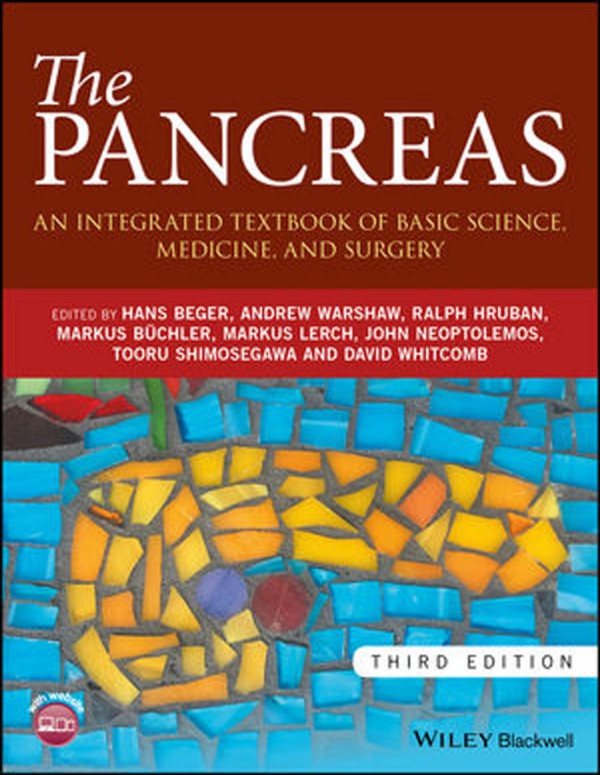
Product details:
ISBN 10:1119188415
ISBN 13:9781119188414
Author:Markus Lerch,John Neopt,Hans Beger,Andrew Warshaw,Markus Buchler,Ralph Hruban
This brand new updated edition of the most comprehensive reference book on pancreatic disease details the very latest knowledge on genetics and molecular biological background in terms of anatomy, physiology, pathology, and pathophysiology for all known disorders. Included for the first time, are two brand new sections on the key areas of Autoimmune Pancreatitis and Benign Cystic Neoplasms. In addition, this edition is filled with over 500 high-quality illustrations, line drawings, and radiographs that provide a step-by-step approach to all endoscopic techniques and surgical procedures. Each of these images can be downloaded via an online image bank for use in scientific presentations.
Every existing chapter in The Pancreas: An Integrated Textbook of Basic Science, Medicine and Surgery, 3rd Edition has been thoroughly revised and updated to include the many changes in clinical practice since publication of the current edition. The book includes new guidelines for non-surgical and surgical treatment; new molecular biologic pathways to support clinical decision making in targeted treatment of pancreatic cancer; new minimally invasive surgical approaches for pancreatic diseases; and the latest knowledge of neuroendocrine tumors and periampullary tumors.
- The most encyclopedic book on the pancreas—providing outstanding and clear guidance for the practicing clinician
- Covers every known pancreatic disorder in detail including its anatomy, physiology, pathology, pathophysiology, diagnosis, and management
- Completely updated with brand new chapters
- Over 500 downloadable illustrations
- An editor and author team of high international repute who present global best-practice
The Pancreas: An Integrated Textbook of Basic Science, Medicine and Surgery, 3rd Edition is an important book for gastroenterologists and gastrointestinal surgeons worldwide.
The Pancreas An Integrated Textbook of Basic Science Medicine and Surgery 3rd Table of contents:
Section 1: Anatomy of the Pancreas
1 Development of the Pancreas and Related Structures
Anatomy of the Pancreas
Organogenesis in the Region of the Pancreas
Early Pancreatic Development
Differentiation of Pancreas Cell Types
Transcriptional Mechanisms Underlying Pancreatic Cell Fate Decision
Development and Disease
Acknowledgment
References
2 Anatomy, Histology, and Fine Structure of the Pancreas
Introduction
Gross Anatomy
Histology and Ultrastructure
Endocrine Pancreas
Acknowledgments
References
3 Congenital and Inherited Anomalies of the Pancreas
Introduction
Primary Malformations
Isolated Congenital Disorders of Pancreatic Endocrine Function
Other Hereditary Disorders with Variable Pancreatic Involvement and Metabolic Diseases Affecting the Pancreas
Inherited Metabolic Disorders Affecting the Pancreas
References
Section 2: Physiology and Pathophysiology of Pancreatic Functions
4 Physiology of Acinar Cell Secretion
Introduction
Composition of Pancreatic Acinar Juice
Acinar Fluid and Enzyme Secretion
Ca Signaling
Organelles Important for Ca Homeostasis
Mechanisms of Ca Signal Generation
Ca Entry and Exit
Ca‐Mediated Control of Enzyme Secretion
Ca‐Mediated Control of Fluid Secretion
Dangers of Ca Signaling
References
5 Physiology of Duct Cell Secretion
Introduction
Sequential Secretion by Acinar and Duct Cells
Regulation of Ductal Secretion
The Ca and cAMP Pathways Synergize to Activate Ductal Secretion
Ductal Secretion‐Associated Pancreatic Diseases
Acknowledgment
References
6 Pathophysiology of Experimental Pancreatitis
Introduction
Models of Acute Pancreatitis
Phases of Acute Pancreatitis
Early Intra‐Acinar Events in Acute Pancreatitis
Conclusion
References
7 Physiology and Pathophysiology of Function of Sphincter of Oddi
Introduction
Anatomy and Morphology
Innervation
Physiology
Motility of the Sphincter of Oddi
Sphincter of Oddi Motility Studies in Animals
Sphincter of Oddi Motility in Humans
Pathophysiology of the Sphincter of Oddi Dysfunction (SOD)
Conclusion
References
8 Neurohormonal and Hormonal Control of Pancreatic Secretion
Introduction
Stimulation of Pancreatic Secretion
Inhibition of Pancreatic Secretion
Feedback Regulation of Pancreatic Secretion
Conclusion
References
9 Regulation of Pancreatic Protein Synthesis and Growth
Introduction
Regulation of Protein Synthesis
Regulation of Pancreatic Growth
References
10 Fibrogenesis in the Pancreas: The Role of Stellate Cells
Introduction
Pancreatic Stellate Sells (PSC)
Acute Pancreatitis
Chronic Pancreatitis
Pancreatic Cancer
Conclusion
References
11 Fibrogenesis of the Pancreas: The Role of Macrophages
Introduction
Macrophages
Origin and Characteristics of Pancreatic Macrophages
Role of Macrophages in Chronic Pancreatitis‐Associated Fibrosis
Role of Macrophages in Pancreatic Cancer‐Associated Fibrosis
Conclusion
References
12 Insulo–Acinar Relationship
Introduction
Structural Relationships Between Pancreatic Islets and Exocrine Pancreas
Insulo‐Acinar Portal System
Regulation of Pancreatic Exocrine Secretion by Islet Hormones
Pancreatic Exocrine Function and Diabetes Mellitus
References
Section 3: Acute Pancreatitis
13 Epidemiology and Etiology of Alcohol‐Induced Pancreatitis
Introduction
Epidemiology
Pathogenesis
Summary
Acknowledgment
References
14 Epidemiology and Etiology of Acute Biliary Pancreatitis
Introduction
Etiology of Gallstone Pancreatitis
Epidemiology of Biliary Acute Pancreatitis
References
15 Genetic Factors in Acute Pancreatitis
Introduction
Genetic Susceptibility Factors
Multiple Genetic Defects and Susceptibility
Progression to Chronic Pancreatitis
Future Directions
References
16 The Role of the Intestine and Mesenteric Lymph in the Development of Systemic Inflammation and MODS in Severe Acute Pancreatitis
Introduction
Role of the Intestine and Mesenteric Lymph in Multiple Organ Dysfunction Syndrome
Role of the Intestine in Severe Acute Pancreatitis
Altered Gut–Lymph Composition in Acute Pancreatitis
Gut–Lymph Toxicity in Acute Pancreatitis
Translating the Gut–Lymph Concept to Clinical Treatments for Acute Pancreatitis
Conclusion
References
17 The Role of Neurogenic Inflammation in Pancreatitis
References
18 Molecular, Biochemical, and Metabolic Abnormalities in Acute Pancreatitis
Introduction
Molecular and Biochemical Abnormalities
Metabolic and Systemic Abnormalities
Electrocardiographic Abnormalities in Acute Pancreatitis
References
19 Histopathology of Acute Pancreatitis
Introduction
Definition
Histopathologic Patterns of Tissue Necrosis
Acute Pancreatitis with Type 1 Necrosis Pattern
Acute Pancreatitis with Type 2 Necrosis Pattern
Acute Pancreatitis with Type 3 Necrosis Pattern
Histopathology Related to Etiologic Factors and Pathophysiologic Mechanisms
Unsolved Questions
References
20 Clinical Classification Systems of Acute Pancreatitis
Introduction
Reasons for Classifying the Severity of Acute Pancreatitis
New Classification Systems
Validation and Comparison of Classification Systems
Future of Classification Systems
Conclusions
References
21 Clinical Assessment and Biochemical Markers to Objectify Severity and Prognosis
Introduction
Historical Perspectives: Approaches to Severity Assessment
Dynamics of Organ Failure
Multiparameter Scoring Systems
Laboratory Variables
Overview
References
22 Acute Pancreatitis Associated With Congenital Anomalies
Introduction
Pancreas Divisum
Anomalous Pancreaticobiliary Ductal Union
Choledochal Cyst/Choledochocele
Annular Pancreas
Ectopic Pancreatic Tissue
Enteric Duplication Cysts
Conclusions
References
23 Acute Pancreatitis in Children
Introduction
Incidence
Etiology
Pathophysiology
Investigations
Diagnosis
Imaging
Management
Outcomes
Acute Recurrent Pancreatitis
References
24 Acute Pancreatitis Associated With Metabolic Disorders, Infectious Diseases, or Drugs
Introduction
Metabolic Diseases
Infectious Diseases
Drug‐Related Diseases
References
25 Radiologic Diagnosis and Staging of Severe Acute Pancreatitis
Introduction
Classification of Acute Pancreatitis
Radiographic Diagnosis of Severe Acute Pancreatitis
Diagnosis of Local Complications of Acute Pancreatitis
Radiologic Staging of Severe Acute Pancreatitis
Limitations and Pitfalls of Radiological Diagnosis of Acute Pancreatitis
References
Clinical Course and Medical Treatment of Acute Pancreatitis
26 Conservative Therapy of Acute Pancreatitis
Introduction
Fluid Resuscitation
Enteral and Parenteral Nutrition
Conclusions
References
27 ICU Treatment of Severe Acute Pancreatitis
Introduction
Pre‐ICU Management
Special Considerations
Indications for ICU Admission
ICU Treatment of Severe Acute Pancreatitis
Early ICU Management (0–48 Hours from Onset of Pain)
Management of Metabolic Derangements
Late ICU Management (>48 Hours After the Onset of Pain)
Management of Infectious Risks
Transition Planning
References
28 Use of Antibiotics in Severe Acute Pancreatitis
Introduction
Infectious Complications
Spectrum of Bacteria
Rationales for Antibiotics inAcute Pancreatitis
Clinical Studies with Antibiotics
Indications for Antibiotic Treatment
Limitations of Antibiotic Treatment
References
Interventional and Surgical Management of Acute Pancreatitis
29 Indications for Interventional and Surgical Treatment of Necrotizing Pancreatitis
Introduction
Interventions for Pancreatic Necrosis: Historical Perspective
Indications and Timing of Intervention
Pancreatic Necrosis with Infection
Symptomatic Pancreatic Necrosis/Walled‐Off Necrosis
Surgical and Interventional Procedures
Surgical Debridement
Percutaneous Catheter Drainage
Direct Endoscopic Necrosectomy
References
30 Management of Infected Pancreatic Necroses
Pancreatic Necrosis
Mechanical Intervention
Transmural Drainage
Results of Endoscopic Therapy of Pancreatic Necrosis
Adverse Events of Endoscopic Therapy of Pancreatic Necrosis
References
31 Minimally Invasive Debridement and Lavage of Necrotizing Pancreatitis
Introduction
Technique
Techniques for Complex Collections
Early Complications
Postoperative Course
Outcome
References
32 Open Surgical Debridement in Necrotizing Pancreatitis
Introduction
General Technique of Open Surgical Debridement
Continuous Closed Lavage
Debridement and Open Packing/Staged Laparotomy
Debridement and Closed Packing
Open Cystogastrostomy for Walled‐Off Pancreatic Necrosis
Conclusion
References
33 Endoscopic Treatment of Biliary Acute Pancreatitis
Pathogenesis of Acute Biliary Pancreatitis
Diagnosis
Indication of Endoscopic Treatment
Techniques
Outcomes and Timing of Endoscopic Interventions
Cholecystectomy After Endoscopic Treatment
References
34 Strategies for the Treatment of Pancreatic Pseudocysts and Walled‐Off Necrosis After Acute Pancreatitis
Introduction
Indications for Endoscopic Treatment
Endoscopic Drainage vs. Necrosectomy: Choosing the Right Patient
Preventing Recurrence by Treating Disconnected Duct Syndrome
References
35 Strategies for the Treatment of Pancreatic Pseudocysts and Walled‐Off Necrosis After Acute Pancreatitis
Introduction
Definition of Pancreatic Pseudocyst and Walled‐Off Necrosis
Indications for Surgical Intervention
Timing of Interventions and Optimal Interventional Strategy for Walled’Off Necrosis
Surgical Intervention for PPC
References
36 Management of Fluid Collection in Acute Pancreatitis
Introduction
Definitions
Imaging of Acute Fluid Collections
Conservative Treatment of Pancreatitis and Pancreatic Fluid Collections
Conclusion
References
37 Management of Pancreatic Fistula in Acute Pancreatitis
Introduction
Pathogenesis and Classification
Diagnosis
Management of External Fistulas
Management of Internal Fistulas
Conclusions
References
Long-Term Outcome After Treatment of Acute Pancreatitis
38 Long‐Term Outcome After Acute Pancreatitis
Introduction
Risk Factors
Endocrine Pancreatic Dysfunction
Exocrine Dysfunction
Recurrent Pancreatitis and Chronic Pancreatitis
Quality of Life and Pain
Incisional Hernia
Pancreatic Cancer and Pancreas‐Related Death
Imaging Findings
Postpancreatitis Care and Follow‐Up Visits
Conclusions
References
Section 4: Chronic Pancreatitis
39 Molecular Understanding of Chronic Pancreatitis
Introduction
People also search for The Pancreas An Integrated Textbook of Basic Science Medicine and Surgery 3rd :
which body system does the pancreas belong to
the pancreas anatomy and physiology
if the pancreas doesn’t produce enough insulin
if the pancreas fails to make
in the pancreas insulin is secreted by ____ cells
You may also like…
eBook PDF
Concise Textbook Of Forensic Medicine And Toxicology 3rd edition by Sharma 8181478568 978-8181478566

